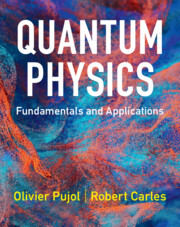Refine search
Actions for selected content:
37953 results in Cambridge Textbooks

International Law
- Coming soon
-
- Expected online publication date:
- April 2026
- Print publication:
- 30 April 2026
-
- Textbook
- Export citation

Quantum Physics
- Fundamentals and Applications
- Coming soon
-
- Expected online publication date:
- April 2026
- Print publication:
- 28 February 2026
-
- Textbook
- Export citation

Criminal Law Perspectives
- From Principles to Practice
- Coming soon
-
- Expected online publication date:
- April 2026
- Print publication:
- 30 April 2026
-
- Textbook
- Export citation
Engineering Dynamics
- Coming soon
-
- Expected online publication date:
- April 2026
- Print publication:
- 30 April 2026
-
- Textbook
- Export citation

Organizational Design
- A Step-by-Step Approach
- Coming soon
-
- Expected online publication date:
- April 2026
- Print publication:
- 30 April 2026
-
- Textbook
- Export citation
Reading Linear B
- Coming soon
-
- Expected online publication date:
- April 2026
- Print publication:
- 30 April 2026
-
- Textbook
- Export citation
Differential Calculus and its Applications
- Coming soon
-
- Expected online publication date:
- March 2026
- Print publication:
- 30 April 2026
-
- Textbook
- Export citation
Classical Mechanics
- Coming soon
-
- Expected online publication date:
- March 2026
- Print publication:
- 01 May 2027
-
- Textbook
- Export citation
Tensors
- Basics and Applications with Scilab Problems
- Coming soon
-
- Expected online publication date:
- March 2026
- Print publication:
- 01 May 2027
-
- Textbook
- Export citation
Control Systems Theory
- Coming soon
-
- Expected online publication date:
- March 2026
- Print publication:
- 01 May 2027
-
- Textbook
- Export citation
Elementary Cartesian Tensors
- With Application to Engineering Problems
- Coming soon
-
- Expected online publication date:
- March 2026
- Print publication:
- 01 May 2027
-
- Textbook
- Export citation

Contemporary Australian Tort Law Cases and Materials
- Coming soon
-
- Expected online publication date:
- March 2026
- Print publication:
- 31 March 2026
-
- Textbook
- Export citation
Music, Medicine, and the Neurobiology of Creativity
- Coming soon
-
- Expected online publication date:
- March 2026
- Print publication:
- 31 March 2026
-
- Textbook
- Export citation

A Student's Guide to the Laws of Thermodynamics
- Coming soon
-
- Expected online publication date:
- March 2026
- Print publication:
- 31 March 2026
-
- Textbook
- Export citation

Coastal Meteorology and Forecasting
- Coming soon
-
- Expected online publication date:
- March 2026
- Print publication:
- 31 March 2026
-
- Textbook
- Export citation

Random Vibrations
- A Primer
- Coming soon
-
- Expected online publication date:
- March 2026
- Print publication:
- 31 May 2026
-
- Textbook
- Export citation

Sign Language Linguistics
- Exploring BSL and ASL
- Coming soon
-
- Expected online publication date:
- March 2026
- Print publication:
- 31 March 2026
-
- Textbook
- Export citation

Speech Technology
- A Theoretical and Practical Introduction
- Coming soon
-
- Expected online publication date:
- March 2026
- Print publication:
- 31 March 2026
-
- Textbook
- Export citation

Understanding Modern Warfare
- Coming soon
-
- Expected online publication date:
- March 2026
- Print publication:
- 31 March 2026
-
- Textbook
- Export citation

An Introduction to Chinese Linguistics
- Coming soon
-
- Expected online publication date:
- March 2026
- Print publication:
- 31 March 2026
-
- Textbook
- Export citation
